Initiative aims to bring breath of fresh air to disinvested communities
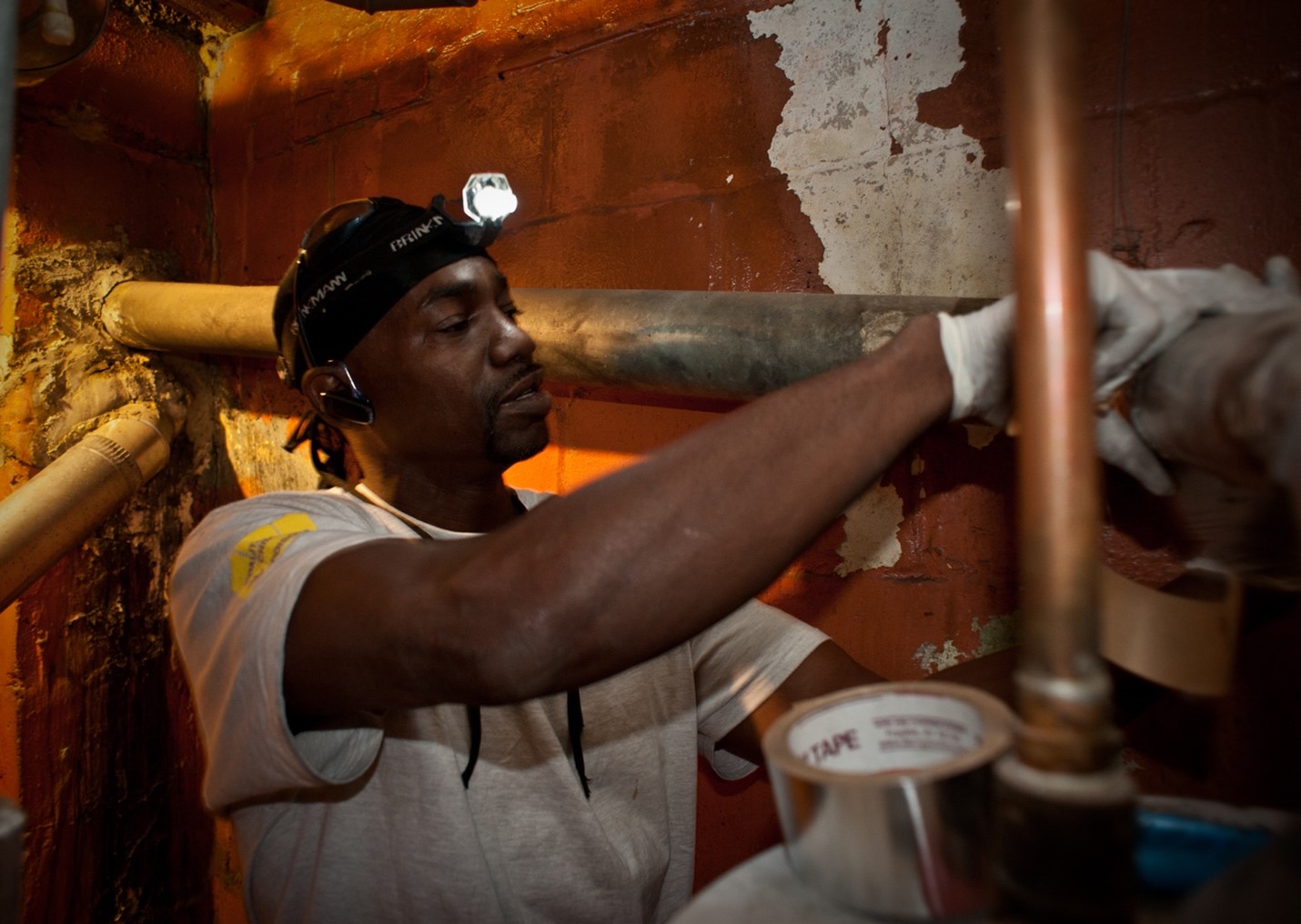
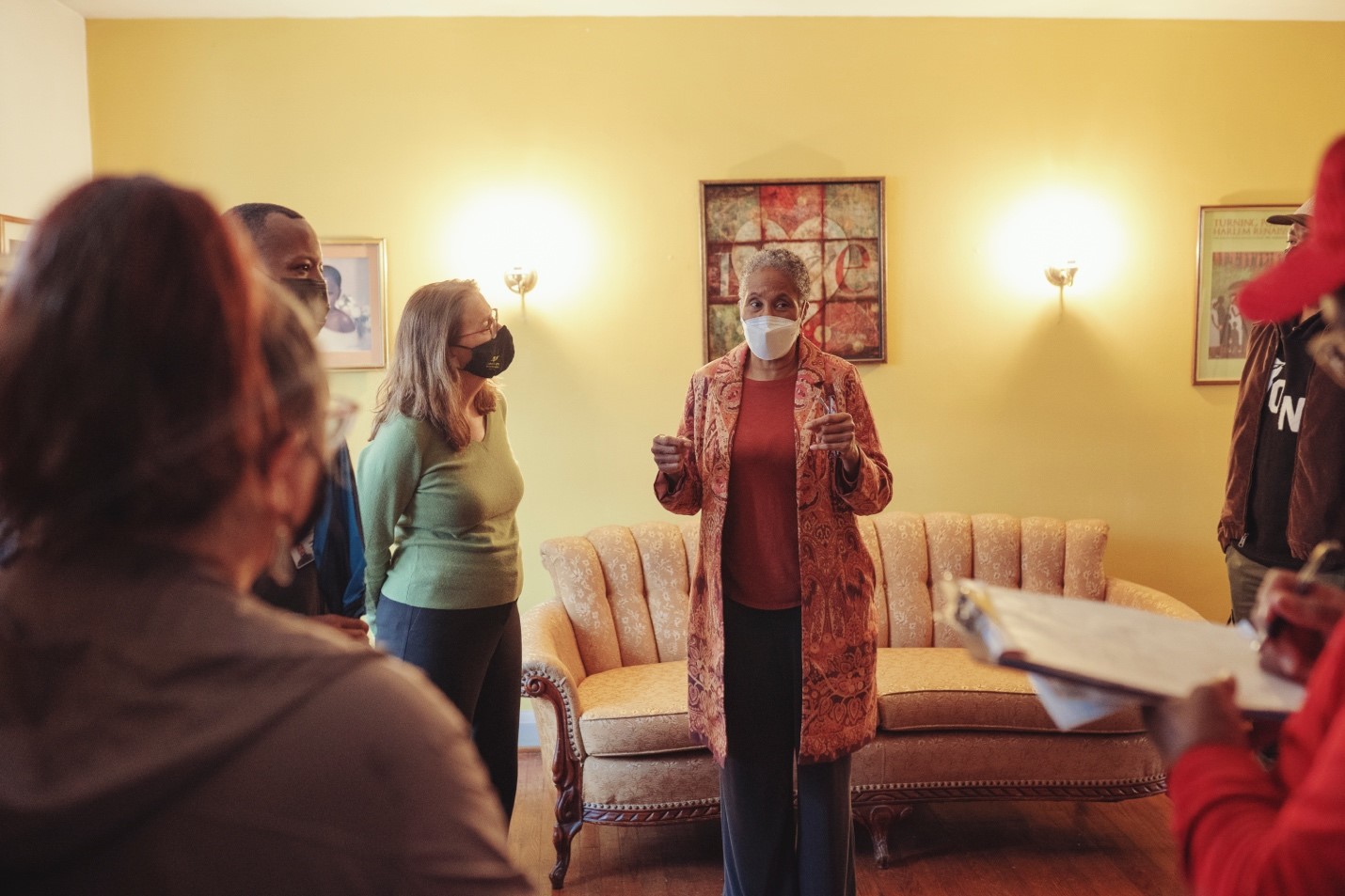
Corliss Billips (center) in her Northeast Baltimore home shares the benefits of healthy housing with climate activists from around the country. Photo courtesy of Bunmi Abari.
Corliss Billips has lived in Baltimore near Morgan State University for 48 years. It’s where she’s owned her home, raised three children, and recently retired as a fraud investigator for the city’s state’s attorney’s office.
It’s also where she wanted to stay, but her house was making her sick. “It wasn’t healthy. I didn’t have cold water upstairs, and I had to regulate my hot water to take a shower by turning down the water heater,” she said. “The upstairs toilet didn’t work, and I smelled gas when I turned on the stove.”
As a senior on a fixed income, she couldn’t afford the repairs. The brick house constructed in 1941 needed an overhaul. Her options were few until she got a referral to the Baltimore-based Green & Healthy Homes Initiative. In late 2022, the nonprofit was awarded $750,000 from Congress for its 1,000 Homes Project, which aims to improve housing conditions, health, economic, environmental, and racial equity outcomes for families in neighborhoods with higher rates of asthma, lead poisoning, energy costs and increased risk of injury.
The project’s goal is to weatherize and electrify homes, improve housing conditions and reduce environmental contaminants in historically disinvested communities.
The project was a match for Billips and the work began.
Long track record
The Green & Healthy Homes Initiative has a long track record in East Baltimore. Founded in 1986 as Parents Against Lead, its advocacy has helped lead to a 99.4% reduction in childhood lead poisoning in Maryland, which a Duke University study found returned $44.5 billion in economic benefits.
While the organization has grown and changed its name, its core focus remains the same: Everyone deserves a healthy home.
From its headquarters in Baltimore, the initiative has worked in 46 states and more than 80 cities through state and local governments, healthcare, utilities and nonprofits.
In October, Green & Healthy Homes was awarded a $400,000 Department of Energy Buildings Upgrade Prize to expand the 1,000 Homes Project. President and CEO Ruth Ann Norton says the Prize affirms the initiative’s whole-home strategy to address the dangerous impact of fossil fuels on human health and the environment.
“A great fear we have, is that if we do not take action now to electrify homes, low-income communities will be left behind with toxic emissions undermining the health of their home. As a society, we made that mistake with lead-based paint and we do not want to continue to repeat these environmental injustices,” she said.
On Wednesday, the Green & Healthy Homes got a big boost from the U.S. Environmental Protection Agency, awarding the organization a $50 million grant as part of its Environmental Justice Thriving Communities Grantmaking Program, which the initiative will use to provide pass-through grant funds to community-based groups advancing environmental justice projects.
“This program will invest tens of millions of dollars into underserved communities in the Mid-Atlantic Region, helping people that have typically been on the outside looking in. The projects that come out of this program will clean up communities, revitalize neighborhoods, and create a strong and vibrant workforce,” EPA Mid-Atlantic Regional Administrator Adam Ortiz said in a statement.
Connecting neighbor with neighbor
Norton says the Green & Healthy Homes Initiative has grown with supporters in the community, like Lowell Larsson, a civic-minded senior citizen.
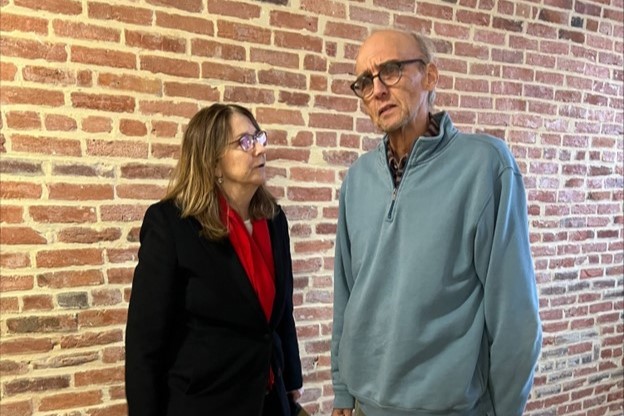
Lowell Lawson speaks with Green & Healthy Homes Initiative President and CEO Ruth Norton about changes that have led to a safer, greener indoor environment at his home, including electrification, weatherization, and mold removal. Photo courtesy of the Green & Healthy Homes Initiative.
As a board member of the Greater Greenmount Community Association, he is an ambassador for a brighter future for his East Baltimore neighborhood, which, he says, is characterized by old homes, vacant dwellings, and is rife with crime. When community work led Larsson to the 1,000 Homes pilot program, he thought: “That’s just what we need [and] I made a list of people that needed it, and of course that included me too,” he said.
Buoyed by improvements in his own home, he now lobbies for neighbors. “When I walk down the street, I see the desolation,” he said. “I see the challenges that people have in their lives because of the housing, and I feel we have to improve this. People can’t continue to live this way. It’s not fair. It’s not just.”
Maryland’s equitable clean energy future
A report titled Charting a Pathway to Maryland’s Equitable Clean Energy Future, released in early 2023 by the Green & Healthy Homes Initiative and state and national environmental groups, makes the case for “equitably electrifying the state’s building sector as a pillar to achieving the state’s climate goals and of the climate goals of the [2022] Climate Solutions Now Act.”
The report goes on to identify $2 billion in state and federal funds for what Norton envisions as a streamlined, whole-home retrofit program to address health and safety repairs and electric upgrades for low-income Maryland households.
“We do not want to miss the opportunity that we will invest in historically disinvested neighborhoods, where people have been cast aside, [where] houses have deteriorated for a lack of zoning code, enforcement, lack of housing, and instead have a path of restorative justice that leads to health and vibrancy that benefits us all,” she said.
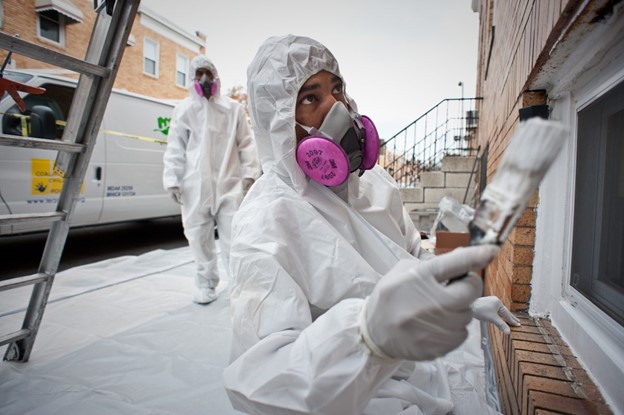
Larry Brown of the Green & Healthy Homes Initiative completes lead mitigation at an older Baltimore home. Photo courtesy of the Green & Healthy Homes Initiative.
State Sen. Antonio Hayes (D-Baltimore City) backed these efforts with grants available through the Maryland Health Equity Resource Act, which he sponsored in 2021 to provide $59 million for neighborhood improvement programs over five years. “We give communities opportunity to identify their own priorities, whether it is housing and other things to address health equity issues,” he said. “The money is already on the street.”
In 2024, Hayes said he will introduce legislation to expand the state’s Appraisal Gap From Historic Redlining Financial Assistance Program to benefit homeowners. The program, which became law after he sponsored a bill in 2021, originally incentivized developers to build affordable housing in historically redlined and disinvested areas.
Norton said the measure opens opportunities to include low-income families that own single family homes. “Our work aligns with this, as we improve the health of housing as a path to improve the home’s value and this step would advance equity and the long-term ability to advance intergenerational wealth transfer,” she said.
Changed lives
Meanwhile Green & Healthy Homes Initiative crews have installed new plumbing for Billips. Her house is now all electric, from its HVAC system and water heater, to the Energy Star appliances, leading to lower energy bills.
“I’ve been given stability. I am not stressed,” she said. “I don’t have to leave my house.”
With a broad smile, she added that her 3-year-old grandson recently spent the night for the first time. “Before, it wasn’t healthy for him to stay. It wasn’t safe. Now it is.”
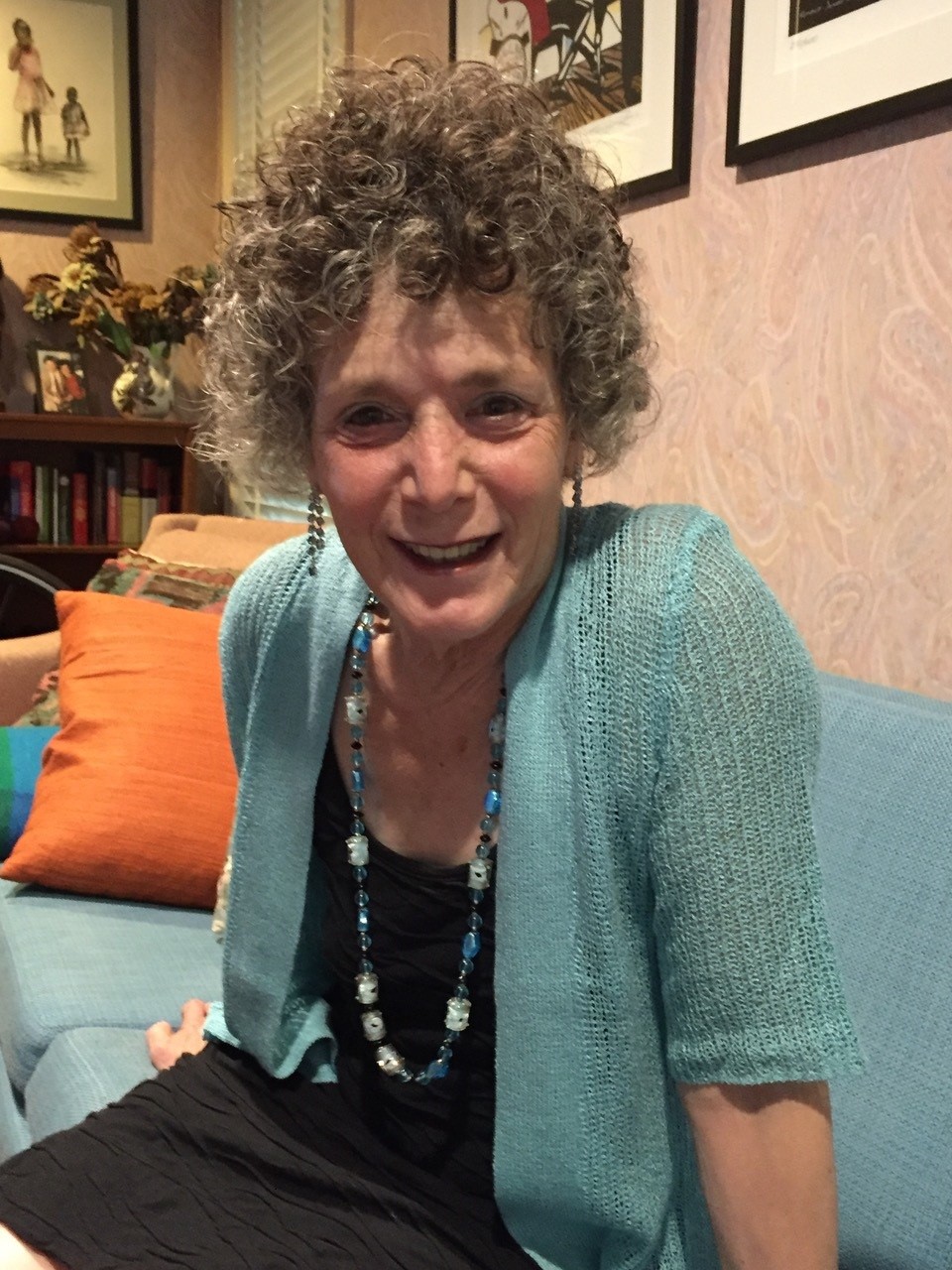

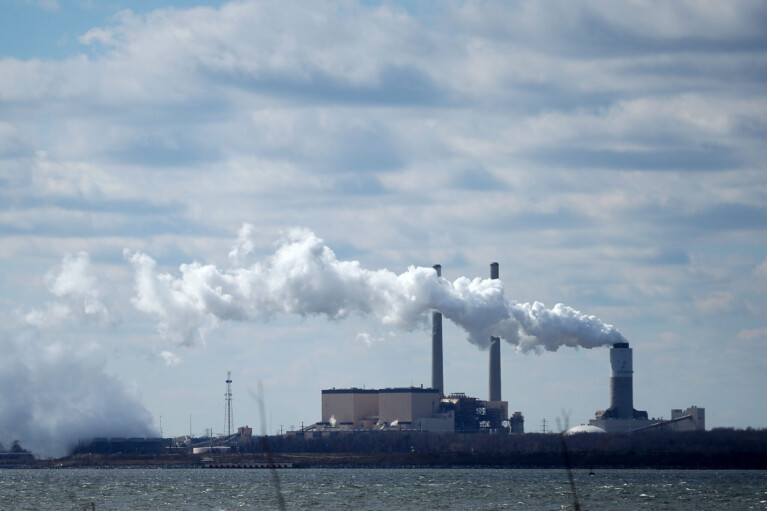

 Creative Commons Attribution
Creative Commons Attribution